Piero Guccione
Piero Guccione was born on May 5 in Scicli, in the province of Ragusa, the third son of a small bourgeois family. His father was a tailor, of good school, the housewife mother.
1948-1954
Thanks to the sensitive complicity of his father, he abandons classical studies to devote himself to drawing and painting. He attended the Comiso Art School for a year, then the Catania Art Institute, where he graduated. In recent years, his friend Ugo Caruso brought a large monograph from Milan, dedicated to the work of Cézanne, which will become a fundamental point of reference.
1954-1955
In the autumn of 1954, shortly after the death of his father, Guccione moved to Rome, where he enrolled at the Academy of Fine Arts. Finding her devoid of any stimulus and interest, he attended her for only one month. He lives in a boarding house in San Francesco a Ripa, supporting himself with the subsidy of 500 Lire from a parastatal school of advertising posters, intended for those coming from outside the city.
In the first two Roman years he almost never paints. Instead, he works as a graphic designer in a Roman studio, where he has the opportunity to try his hand at new forms of expression such as advertising posters, caricatures for newspapers, furniture designs.
1955-1958
At the beginning of 1955 he met Renato Guttuso in his studio at Villa Massimo and showed him his drawings. He begins to frequent the neorealist painters of the Il Pincio Gallery, in Piazza del Popolo (Astrologo, Attardi, Tornabuoni and Vespignani) and frequent are his visits to the National Gallery of Valle Giulia to admire, above all, artists such as Scipione, Mafai and Pirandello.
1958-1959
Driven by youthful enthusiasm, but also by economic needs, Guccione agrees to participate in the first paleontological mission in the Libyan Sahara, directed by Fabrizio Mori, an experience that he repeated in the following eight years until 1969. The purpose of these missions was the survey in life size of cave paintings and graffiti of prehistoric Saharan civilizations.
1960
He holds his first personal exhibition at the Galleria Elmo in Rome, presented by the art critic Duilio Morosini. His painting, in evident training, shows an interest in the expressionism of Levine and, above all, of Soutine.
1961
He goes to the United States where, at the request of the American Federation of Art, he exhibits reproductions of paintings and graffiti on prehistoric Saharan civilizations in an exhibition at the Columbia University in New York, then itinerant in major American universities.
1961-1964
He starts attending the neo-figurative group "The pros and cons" formed by the painters Attardi, Calabria, Farulli, Gianquinto, Vespignani and by the critics Del Guercio, Micacchi and Morosini, from whom he will leave in 1964. In that same period, Guccione realizes some works that refer to the painting of Francis Bacon, discovered in 1962 together with Attardi, on the occasion of the exhibition dedicated to the great Irish painter in Turin.
1962
He signs a contract with the La Nuova Pesa Gallery, where he organizes his second solo show: after almost ten years of activity, Guccione finally manages to live on painting alone.
1963
Illustrates Stendhal's Il rosso e il nero for the publisher Parenti.
1965
With the cycle of the Giardini, exhibited at the Galleria La Nuova Pesa, he achieves total artistic autonomy: the story of reality leaves room for things, all of them, worthy of being painted.
1966-1969
In 1966 he participated for the first time in the Venice Biennale, where he was also invited in 1972, 1978, 1982, 1988, and 2011. From 1966 until 1969 he was Renato Guttuso's assistant at the Academy of Fine Arts in Rome, where he was also chair holder.
1967
He paints On the beach of Sampieri, his first view of the sea, where the influence of Edvard Munch, much loved painter, is strong, to whom he will dedicate a trip to Oslo in 1973.
1968
First solo show at the Il Gabbiano Gallery in Rome, where he presents works from the Reflected City cycle: landscapes reflected on car bodies. He begins a long partnership, both professional and human, with Sandro Manzo and Laura Mazza, owners of the gallery.
1969
He builds a summer house between Punta Corvo and the Bay of Sampieri, the extreme edge of Eastern Sicily. From this moment on, his stay in Sicily became more and more assiduous.
1969-1970
He paints the cycle Waiting to leave, consisting of a dozen canvases then exhibited at the Galleria Forni in Bologna, where he touches "a second moment of notable completeness with a blocked form, sometimes bordering on virtuosity" (cit. G. Giuffré).
1970
The small painting entitled The lines of the sea and the earth starts the cycle of the same name, one of the most characteristic of his painting.
1971
The city of Ferrara dedicates the first anthology to him at Palazzo dei Diamanti with the exhibition of 80 works from 1962 to 1970, presented by Enzo Siciliano.
1976
He exhibits for the first time in Paris, with a solo show at the Galerie Claude Bernard (where he will be invited again in 1983, 1988 and 1998) presented in the catalog by Dominique Fernandez.
1977
In the French capital he visited an exhibition on Romanticism painting and was “struck” by the room dedicated to Caspar David Friedrich, “by his cold and incandescent eye, together”, which greatly influenced the production of the following years.
1979-1980
Piero Guccione decides to leave Rome and return permanently to Sicily. His new and permanent observation point will be in the Modica plateau, in Quartarella, where he will spend the rest of his life.
Galleria Il Gabbiano presents him for the first time at the FIAC in Paris with a solo show.
1980
He exhibits for the first time in New York, at the Odyssia Gallery, presented in the catalog from a text by Alberto Moravia.
1981
The large canvas The Last Sea, completed in 1983, significantly marks the artist's change of direction, and the beginning of a new phase, which coincides with the (momentary) abandonment of oil painting and the theme of the sea, which he will resume in 1985. In this period Guccione devoted himself mainly to drawings and pastels, which led to the birth of two important cycles: Journey around Caspar David Friedrich and the first series of pastels dedicated to the Carob: images and reflections around a tree that dies.
Together with the painter and brotherly friend Franco Sarnari, he became a point of reference of the "Gruppo di Scicli" which held the first collective exhibition at the Galleria La Palazzolo in Palermo entitled Ombre e Luci del Sud. Renato Guttuso, who visited the exhibition, was the first to coin the definition of "Scicli Group".
1984
He returns to America invited by the Hirshorn Museum in Washington to the international Drawings 1974-84 exhibition. The Galleria Il Gabbiano also exhibits it for the first time at the Chicago International Art Exposition with a solo exhibition presented by Susan Sontag.
1985
The interest in his work is consolidated on an international level. He exhibits an anthology of graphics at the Metropolitan Museum / The Mezzanine Gallery of Art in New York, where two of his graphic works are included in the permanent collection of the Museum. Galleria Il Gabbiano presents the cycle of pastels Geometry and melancholy of stones at the Kunstmesse (ArtBasel) in Basel.
After a few years of suspension, he resumes the interrupted dialogue with oil painting, especially with the theme of the sea. At the same time, he works on pastels for the short story Senso by Camillo Boito, which will be released in 1986 by Edizioni Franca May, with an introduction by Alberto Moravia.
1986
He exhibits, first in Milan and then in Rome, the cycle of pastels on the theme of the carob tree After the West Wind, presented in the catalog by Gesualdo Bufalino and Susan Sontag.
1987
He began to devote himself to d'après as a reaffirmation of the saving value of art and a tribute to the classics such as Caravaggio, Giorgione, Correggio, Leonardo, Masaccio, Michelangelo, Pontormo.
1988
The Venice Biennale, in the Italian Pavilion, pays homage to him with a personal room where the great painting The Last Sea is exhibited.
He is a finalist (with Burri, Schifano and Perez) at the Artist of the Year award in Naples, promoted by 120 Italian critics.
1989
The James Goodman Gallery in New York dedicates an important solo exhibition to him.
At Palazzo Sarcinelli in Conegliano, a large anthology of his is inaugurated (130 works, including paintings and pastels, from 1957 to 1989) curated by Marco Goldin.
1991
He exhibits at the Galleria Il Gabbiano the sketches for the sets of Norma, by Vincenzo Bellini, staged in May 1990 at the Bellini theater in Catania under the direction of Mauro Bolognini.
1993
On the occasion of the event for the 64th Viareggio Literary Prize, he exhibits the series Il mare at Palazzo Paolina in Viareggio.
He declines the invitation from Bonito Oliva to participate in the Venice Biennale.
1995
Guccione is appointed Academician of San Luca.
She declines the invitation from Jean Clair to participate in the Venice Biennale, the centenary edition.
1997
The first anthological exhibition dedicated solely to pastels takes place at the Villa Foscarini-Rossi in Stra (Venice), with 80 papers ranging from 1974 to 1996, curated by Marco Goldin.
1998
The work Towards the East invisible and light exhibited at the one-man show at Palazzo Reale in Milan.
1999
Receives the Special Prize for Culture from the Presidency of the Council of Ministers together with Riccardo Muti and Rita Levi Montalcini.
1999-2000
For the Garibaldi theater in Modica he created (with Franco Sarnari, Piero Roccasalva and Giuseppe Colombo) a canvas with a diameter of 440 cm, for the vault of the hall.
2000
The two paintings Sul far della luna and Il grido della luna open the last cycle dedicated to the sea, no longer surface but absolute depth and harmony of the invisible.
2001
The re-edition of Galileo Galilei's original work Discorsi around two New Sciences is published by Il Cigno GG Edizioni in Rome, with the preface by His Holiness John Paul II and illustrated by ten engravings by Piero Guccione.
2004
On December 14, 2004, he received the Gold Medal of the Presidency of the Italian Republic from Carlo Azeglio Ciampi as a merit of art and culture.
2005
The Sicilian Region honors the artist's 70th birthday with an exhibition curated by Enzo Siciliano and traveling to St. Petersburg, Monza, Barcelona and Modica.
2006
In July, the large canvas Il nero e l'azzurro is exhibited on the wall of the Sala Italia of Palazzo Madama in Rome, seat of the Senate of the Italian Republic.
2008
Milan and Rome celebrate Piero Guccione by dedicating important exhibitions to him, respectively at the Royal Palace and at the National Gallery of Modern Art (GNAM), curated by Vittorio Sgarbi and Maurizio Calvesi.
2010
The blades of the Magdalene are inaugurated for the Baptistery of the Basilica of Santa Maria degli Angeli e dei Martiri in Rome.
2011
The documentary film Piero Guccione, towards the infinite, by director Nunzio Massimo Nifosì is presented at the International Film Festival in Rome and at the Venice Biennale.
2015
The city of Modica honors Guccione's 80th anniversary with an anthological exhibition, curated by Paolo Nifosì and Tonino Cannata.
2017
In July he receives the 2017 Pio Alferano Award at the Castello dell'Abate (Castellabate, Salerno), where the last exhibition dedicated to him is set up, The harmony of the invisible, curated by Giuseppe Iannaccone.
2018
Piero Guccione died on 6 October, at the age of eighty-three, in his beloved house in Quartarella (Modica).
Last update: July 01, 2019
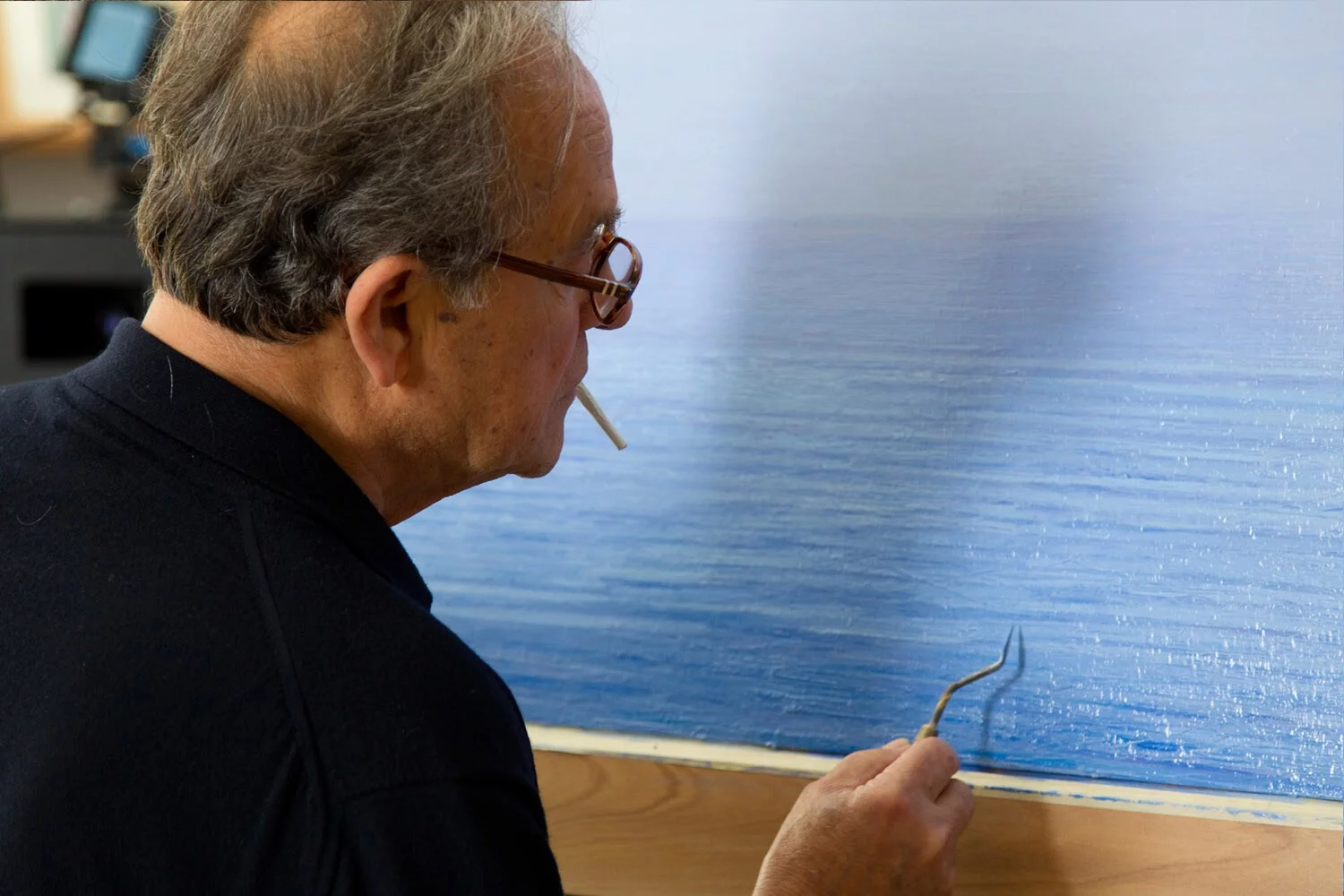
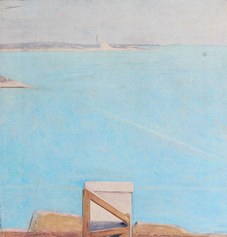
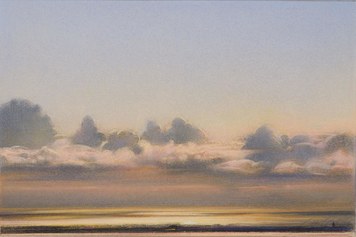
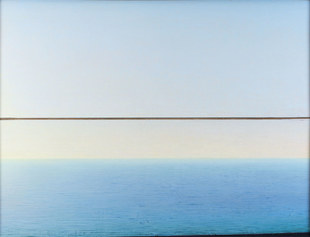
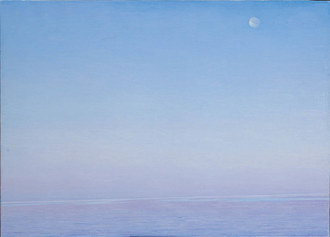
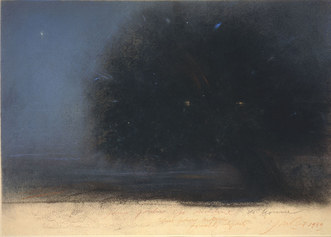

 itinerarinellarte.it è un sito che parla di arte in Italia coinvolgendo utenti, musei, gallerie, artisti e luoghi d'arte.
itinerarinellarte.it è un sito che parla di arte in Italia coinvolgendo utenti, musei, gallerie, artisti e luoghi d'arte.